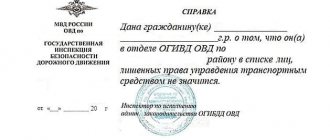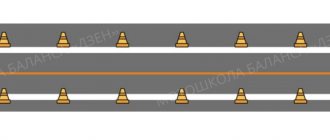Fire, explosion, leakage of radioactive substances - these are the possible damages that can result from improper transportation of dangerous goods. To protect people and the environment, developed countries have developed regulations for the transportation of hazardous substances for all types of transport. In this article we will describe the rules and requirements for the transportation of dangerous goods by land road transport in Russia, consider the main nuances, violations and liability of legal entities for violations.
- What is dangerous goods
- Classes of dangerous goods
- Who has the right to transport dangerous goods?
- Rules for the transportation of dangerous goods by road
- Documents required for the transport of dangerous goods
- Requirements for drivers to transport dangerous goods
- Requirements for vehicles for transportation of dangerous goods
- Permission to drive a vehicle with dangerous cargo
- Violations and fines for incorrect transportation of exhaust gases
- Payment of fines for dangerous goods at a discount
What is dangerous goods
Dangerous cargo is a substance that can harm the health and life of people, the environment and material assets in the event of an accident during its transportation.
The transport of dangerous goods is regulated by the European Agreement concerning the International Carriage of Dangerous Goods by Road (ADR or ADR).
The list of hazardous substances includes more than 3 thousand items. Each such substance has a special identification number. The list is divided into classes.
In Russia, the state standard GOST 19433-88 is in force, which divides dangerous goods into classes according to the level of danger. The requirements of this standard are developed in accordance with ADR.
Validity period and renewal procedure
The license is issued for a certain period
A license is issued for a period of at least three years. A car document is issued for no more than a year. The license card is valid for one year.
When renewing the permit, you will have to follow the same registration path, taking the old permit with you.
Classes of dangerous goods
class 1 - explosive materials; class 2 - compressed, liquefied and dissolved gases under pressure; class 3 - flammable liquids; class 4 - flammable solids, spontaneously combustible substances, substances that emit flammable gases when interacting with water; class 5 - oxidizing substances and organic peroxides; class 6 - toxic substances and infectious substances; class 7 - radioactive materials; class 8 - caustic and (or) corrosive substances; class 9 - other hazardous substances.
Each class is also assigned a subclass, category and degree of danger. Not every carrier can transport these substances.
Check the organization's fines
A transport permit is required when transporting the following categories of substances:
- Explosives.
- Various gases in liquefied, compressed, dissolved or normal state.
- Liquids with flammable or explosive properties.
- Solids with flammable or explosive properties.
- Peroxides and substances with a strong oxidizing effect.
- Toxic and infectious dangerous goods.
- Radioactive cargo.
- Alkalis, acids and other chemically aggressive substances.
- Other dangerous goods that do not fall under any of the above categories.
Rules for the transportation of dangerous goods by road
Transportation of dangerous goods must be organized taking into account the requirements established by the following regulations:
- European Agreement concerning the International Carriage of Dangerous Goods by Road of September 30, 1957 (ADR);
- Federal Law of November 8, 2007 No. 257-FZ “On highways and road activities in the Russian Federation and on amendments to certain legislative acts of the Russian Federation”;
- Rules for the transportation of goods by road, approved. Decree of the Government of the Russian Federation dated April 15, 2011 No. 272;
- Rules for ensuring transportation safety, approved. by order of the Ministry of Transport of Russia dated January 15, 2014 No. 7;
- Order of the Ministry of Transport of the Russian Federation dated July 4, 2011 No. 179 “On approval of the Procedure for issuing a special permit for the movement of a vehicle transporting dangerous goods on roads.”
- High-risk cargo can only be transported with a special permit (more on this below).
- The vehicle must have a yellow or orange flashing light on.
- The vehicle must comply with the requirements of the Technical Regulations of the Customs Union “On the safety of wheeled vehicles” (TR CU 018/2011) and section 9 of ADR.
- Vehicles transporting hazardous substances are equipped with a “dangerous cargo” identification sign.
- The speed of movement must be established when agreeing on transportation.
- The driver must undergo special training and obtain a certificate of approval to transport dangerous goods.
- The carrier is obliged to comply with the precautions outlined in Chapter 1.10. ADR.
An example of a car's front and rear designation:
Special markings on the sides of tanks, as well as on the sides of vehicles and containers:
Licensing of road transport
Licensing of motor transport implies transportation of passengers and transportation of goods. The licensing authority is the Ministry of Transport of the Russian Federation. I would also like to note that each type of activity is provided with its own license.
The Ministry of Transport of the Russian Federation makes a decision on issuing a license or refusing it within a period not exceeding 30 days from the date of receipt of the application with the relevant documents, in which a list of documents is attached. A license for the corresponding type is issued for 5 years, in the future it can be extended. If the licensee changes the number of vehicles, he will be required to notify the authority within 15 days of the change. As for scheduled inspections, they are carried out differently; for the transportation of passengers, no more than once a year, and for the transportation of goods, no more than once every two years.
Verification as part of resolving the issue of issuing a license:
The inspections themselves are carried out on the basis of an order from the head of the licensing authority. Based on their results, an act or protocol is issued, drawn up in two copies - for you and for the authority.
If there are violations, they must be attached to the protocol to confirm their requirements for the license applicant. The protocol is signed by both parties, and is registered in the body's journal and submitted to the head of the body.
The licensing authority has the right to suspend the receipt of a license until errors are corrected, or even refuse to obtain a license if repeated violations or gross violations have been identified.
After the authority has made a decision on suspension, it notifies the license applicant within three days. Also, the license loses legal force if the organization is liquidated or ceases its activities as a result of reorganization, except for transformation or termination of the certificate of state registration as an individual entrepreneur.
The authority may revoke a license if the organization does not pay the license fee within three months. Also, a license can be revoked by a court decision if the regulatory body receives complaints about the organization, and these complaints were accompanied by a violation of the legal rights of citizens.
In order to understand the difference between transporting passengers and transporting goods, we will continue our topic in the next title.
Documents required for the transport of dangerous goods
- special permit for the transportation of dangerous goods by road (for high-risk goods);
- certificate of vehicle approval for the transportation of dangerous goods;
- certificate of driver training for the transportation of dangerous goods;
- instructions for the driver, responsible persons, accompanying person on the rules of transportation;
- waybill with cargo markings;
- cargo safety data sheet;
- waybill;
- contract of carriage.
Checking fines for legal entities. persons
Try for free
Requirements for drivers to transport dangerous goods
To drive a car with dangerous cargo, the driver must complete a training course at a specialized training center and receive an ADR certificate of preparation for the carriage of dangerous goods of international standard.
The certificate contains information about exactly what hazard class the driver can transport. It depends on what training course you completed.
Training to transport hazardous substances can be completed by a driver with at least three years of continuous driving experience in the relevant category.
Without an ADR certificate, driving a vehicle to transport hazardous substances is prohibited.
Can extradition be refused?
People who are going to professionally engage in the transportation of dangerous goods and not violate the legislation of the Russian Federation should understand that the agreement on the movement of such substances is not a simple static structure; it periodically undergoes changes.
Transport companies and drivers should be constantly aware of the proposed adjustments so as not to lose licensing for the transportation of such a specific product. Typically, such changes relate to vehicle compliance and travel regulations.
If you do not adhere to basic standards, not only your employees and equipment will be at risk, but also those around you. Therefore, often the responsible authorities may refuse to issue the specified document. In case of refusal, a specific reason is always indicated and only after it has been eliminated is the documentation submitted again.
What are the main reasons for refusal?
According to statistics, most often an applicant is rejected precisely because of unreliable information in the documentation. If difficulties arise in collecting papers, then due to inexperience a person may forget something. Re-applying takes additional time, but in fact requires minimal effort to correct. Otherwise, problems may arise when:
- The authority to which the application was submitted a priori cannot issue permits along the route specified by the carrier.
- The submitted kit contains incorrect data or deliberately false information about the driver and the car.
- Important papers for obtaining a permit are missing, and some copies are missing.
- Previously, the next time permission was requested from the owner of the infrastructure, a reasoned refusal was already received.
- The vehicle is not included in the register or there is no corresponding notice on the car.
- The car did not pass technical inspection or was converted, although the traffic police did not give permission for the modification.
A more controversial situation is when it is the owners of the required road who refuse. There, if the refusal is justified, you will have to perform a new route and change the planned trajectory.
Requirements for a vehicle to transport dangerous goods
Dangerous goods can only be transported on special vehicles that are manufactured or retrofitted in accordance with regulatory documents.
You must also first obtain a certificate of approval of the vehicle for the transportation of hazardous substances.
On January 10, 2021, the updated regulations for issuing such a certificate came into force.
To obtain permission to drive a vehicle, you need:
- Contact the traffic police department with the following documents:
- statement;
- identification document of the applicant;
- power of attorney or agreement if the applicant is a representative of the owner of the vehicle;
- tank type approval certificate (for tanks);
- certificate of testing and (or) inspection of the tank indicating the list of substances approved for transportation (for tanks).
Until January 1, 2021, it is not necessary to present certificates for tanks (Resolution of the Government of the Russian Federation of March 16, 2021 No. 285).
- Provide the vehicle for visual inspection.
The official will check it for compliance with the requirements of the legislation of the Russian Federation, the requirements of ADR and the information specified in the documents.
- Receive a certificate of admission.
According to clause 20 of the regulations, the procedure should not take more than 3 hours.
There is no state duty or other payment, so obtaining permission to transport dangerous goods is free.
The issuance of a certificate may be refused on the basis of:
- unreliability of information in the submitted documents;
- lack of information about the passed technical inspection at EAISTO;
- failure to present the car for inspection;
- unauthorized changes to the vehicle design;
- discrepancies in vehicle markings (body number, engine number, etc.).
The certificate is valid for 6 months. In this case, the validity period of the certificate cannot exceed the validity period of the technical inspection.
For example. The technical inspection will expire in three months. The permit will also be issued for 3 months. If the next technical inspection is due in eight months, the permit will be valid for 6 months.
Receipt procedure
As stated earlier, the driver is required to undergo training in order to obtain approval for transportation in specialized institutions (regional or regional DOSAAF). The applicant is usually required to submit any form to record his identity and place of registration, and in addition, rights with an open category. Order of the Ministry of Transport No. 179 establishes a very clear order of stages:
- Write a corresponding application, where you should indicate all the necessary data.
- Attach a complete package of the requested papers, including receipts for payment for the courses themselves.
- Wait until the submitted documents are verified to ensure the accuracy of the submitted data.
- If no delays or claims are identified, the request will be registered in the system.
Consideration of the incoming application is given exactly 10 days, after which the authority will make a final decision: refuse the official request for permission or agree on the final route. After completing the training, the driver passes an exam to the commission and only then receives a certificate.
Documents for registration
According to the rules, in order to obtain a suitable permit for the transportation of dangerous goods, each company or individual will need to complete the following set of mandatory papers:
- notification of inclusion in the register of a specific category;
- form for registration of transport for the delivery of dangerous goods;
- a certificate that confirms ownership;
- ADR document on the required qualifications of the driver;
- certificate of approval for a specific car model;
- payment order confirming the fact of tax payment;
- evidence demonstrating the authority of the representative.
At the same time, do not forget about other information that must also be provided in a timely manner in order to obtain the appropriate permit for the transportation of hazardous substances on Russian roads:
- Complete information about the applicant (brand name, addresses, location, contacts, TIN, registration number).
- Information about the route (name and contacts of all transportation members, data on intermediate delivery points, refueling points and parking lots).
- Other information about the cargo being transported (selected connection class, as well as name with an abbreviated description of the composition).
The entire process of obtaining a permit to transport such goods lasts up to 30 days inclusive. But every time, when setting off on a flight, the driver will have to carry with him a fairly large package of papers:
- driver's license with a driving category of a specific class;
- certificate confirming the registration of the car;
- documents that permit the attachment of a trailer;
- full technical inspection certificate or diagnostic card;
- documents confirming the driver’s right to drive;
- vehicle approval to transport materials of this hazard class;
- a valid MTPL policy for a specific car;
- ADR certificate and medical clearance certificate.
Before obtaining official approval to transport dangerous goods, the vehicle must be prepared accordingly. It is worth very carefully checking the tightness of containers and packaging, installing danger signs and performing special marking of dangerous goods in accordance with established transportation rules. It is the fulfillment of these requirements that will greatly facilitate obtaining permission to transport dangerous goods by road.
Cost of obtaining a permit
Despite the fact that you can prepare for the procedure of studying and passing exams on your own and in advance, because it is easy to find lectures and all options for exam questions on the Internet, you should not forget about paying for the courses themselves. The cost of training varies depending on the region in which the driver intends to obtain the desired permit.
In 2021, for a full course of lectures and exams, you had to pay around 4-9 thousand rubles. for one vehicle. You can find out exactly how much an ADR course for the transport of dangerous goods costs in a particular region by contacting accredited centers.
In this case, no state duty or other fees are charged for the provision of this service. Thus, you can obtain a permit or renew it completely free of charge, and the entire amount mentioned is paid exclusively for training.
Deadlines for receiving it
The period for providing the paper in question is calculated from the moment of actual acceptance from the applicant of the written application and documents necessary for the provision of the service itself. Usually the certificate is issued within 3 hours, although previously (before January 2020) the maximum period for issuance was only 1 business day.
It is worth remembering that the established regulations also fix the maximum deadlines for various actions of the traffic police. For example, when submitting papers, the driver must wait in line for no longer than 15 minutes.
Permission to drive a vehicle with dangerous cargo
Transportation of dangerous goods classified as high-risk goods according to the European Agreement on the International Carriage of Dangerous Goods by Road (ADR) is permitted with a special permit (clause 1.1 of Article 31 of the Federal Law of November 8, 2007 N 257-FZ).
The list of high-risk cargo is presented in Table 1.10.5. ADR. Such cargo includes, for example:
- explosives and products (pyrotechnics, trinitrotoluene, hexogen);
- flammable liquids (acetone, gasoline, ethanol, kerosene, acids);
- flammable gases (oxygen, natural gas);
- liquid oxidizing agents (hydrogen peroxide, ammonium nitrate, potassium permanganate);
- toxic substances (carbamate-based pesticide);
- radioactive materials (products made from natural uranium, objects with surface radioactive contamination);
- corrosive substances (sulfuric acid, liquid acid batteries).
You can obtain permission to transport especially dangerous goods for a car that was previously included in the register of categorized vehicles of Rosavtodor (Article 31 of the Federal Law of November 8, 2007 N 257-FZ).
The procedure for issuing a special permit is established by Order of the Ministry of Transport of the Russian Federation dated July 4, 2011 No. 179. A permit is issued at the Rostransnadzor office at the place of registration of the applicant. You can send an application with copies of documents by mail or fill it out on the government services portal. A sample application is in Appendix No. 2 to the Order.
List of documents attached to the application:
- a copy of the STS or car rental agreement;
- a copy of the certificate of approval of the vehicle for the carriage of dangerous goods;
- a copy of the driver’s certificate of approval to transport dangerous goods;
- power of attorney, if it is not the owner of the vehicle who is applying, but his representative.
In addition, you need to provide a diagram of the transportation route with parking and gas stations. As well as information about the cargo being transported: name, description, class, UN number.
The authorized body verifies the completeness and accuracy of the information. Checks compliance of technical characteristics of transport with safety requirements.
As a result, the owners of the roads along which the route passes are sent an application for approval or the issuance of a permit is refused.
Reasons why a permit may be refused:
- the route does not pass along federal roads;
- non-compliance with the requirements of ADR to ensure the safety of transportation of dangerous goods;
- not all documents are presented or they are not reliable;
- There is no information about the inclusion of the vehicle in the register of categorized vehicles.
State duty in accordance with paragraph 111 of Art. 333.33 of the Tax Code of the Russian Federation will be 1300 rubles.
Compliance with the rules for the transportation of dangerous goods is monitored by the State Traffic Inspectorate and Rostransnadzor. Violators bear administrative liability.
How to obtain a special permit for ADR
We will tell you in more detail how to obtain an ADR permit for a transport organization. The carrier can issue a permit independently or contact consulting companies (SIP and others) that provide similar services.
When registering independently, the following procedure is assumed:
- Train the driver in ADR.
- Buy the necessary equipment for transport.
- Issue certificates for vehicle approval with inclusion in the appropriate register.
- Prepare the necessary set of documentation.
- Complete an application and submit it to the regional transport inspection department.
- Six days later, receive a completed copy of the permit or a reasoned refusal in writing.
On a note. Documentation is submitted in paper form, directly visiting the government agency, by mail (registered mail), fax or through the State Services portal (electronic scanned copies).
Entry into the Register of Categorized Vehicles of Rosavtodor
Transportation of high-risk cargo requires inclusion of the vehicle in the appropriate register. Without a certificate confirming the category of transport, obtaining a permit to transport dangerous goods is impossible.
To include a car in the appropriate vehicle register, an application in the prescribed form is submitted to the central Rosavtodornadzor, located in Moscow.
Documents can be submitted in person, by mail, fax or through State Services.
The request is submitted accompanied by:
- the applicant's civil passport;
- powers of attorney if equipment is rented from another owner;
- tank type approval certificate (for the corresponding vehicle);
- documentary evidence of tank truck testing;
- a previously issued certificate of admission (if the document is issued again).
If there are no comments to the applicant, the vehicle is included in the register within 24 hours after receiving the papers, and an appropriate certificate is issued, valid for a year (but not later than the date of the next technical inspection).
List of documents
A transport organization can obtain a special permit for the transportation of dangerous goods by contacting the traffic control department in the relevant region. Submit an application for the issuance or extension of a previously received document, drawn up according to the established template, accompanied by:
- copies of registration certificates, documentary evidence of ownership for each unit of transport involved;
- copies of certificates indicating the admission of vehicles to the movement of high-risk cargo;
- copies of driver training according to ADR;
- documentary confirmation of the authority of the representative, if the papers are transferred by an authorized person on behalf of the carrier.
If dangerous goods are transported on international or intercity routes, there is no need to provide additional documentation. The transport supervision authorities verify this data independently based on the available registration information.
Required information
Data required:
- for organizations – name, registration information; for individuals – full name and tax identification number;
- characteristics of cars listing registration data, type, model, VIN number, overall dimensions, availability and parameters of the tow hitch;
- transported cargo with a number according to the accepted classification system;
- proposed route with stops and refueling points;
- form for issuing a special permit (paper or electronic);
- dates and times of transportation.
The transport organization provides the necessary information, reflecting this in the application.
Dangerous goods transport signs
Submitting an application
To complete and submit an application, you must:
- Download the approved form on the regional highway website.
- Complete the request including the information above.
- Submit an application to the road inspection department, accompanied by the prescribed set of documents.
- Six days later, receive a formalized permit or a reasoned refusal.
A letter with an application and accompanying papers for permission to transport and accept dangerous goods can be submitted in the following ways:
- direct visit to the traffic control department;
- sending by mail;
- by fax;
- in electronic form (on the UGADN website or through State Services).
Within the six-day period allotted by law, the transport inspectorate checks the received documentation, coordinates the route with the traffic police, and the owners of the roads through whose territory travel will be carried out.
Document: Application
What is prohibited from requiring from the applicant
UGADN employees do not have the right to require the applicant to provide documentation beyond the list established by the current regulations, confirmation of permission for international delivery of goods (if transportation to the territory of another state is intended).
Deadline for issuing a special permit
A request with a set of documents must be submitted no later than seven days before the start of cargo transportation. The decision to issue a permit is made within six days. The permit is valid for one year from the date of issue.
Refusal to issue a special permit
Refusal to issue a permit may be due to:
- deviation from the requirements of ADR;
- violations of safety standards in the developed route;
- extraordinary circumstances along the route: natural disasters, man-made disasters, civil unrest, etc.;
- non-compliance of the vehicle with the required conditions;
- restrictions imposed on such cargo transportation on certain days;
- incomplete set of submitted documentation.
If the applicant does not agree with the refusal, such a decision can be challenged in a higher authority or through the court by filing an appropriate claim.
Violations and fines for incorrect transportation of exhaust gases
As noted by traffic police officers, the most common violations in the field of transportation of dangerous goods are non-compliance of the vehicle design with the requirements and the lack of permits.
Liability for these violations and failure to comply with other requirements for the transportation of hazardous substances is established by Article 12.21.2 of the Administrative Code.
Responsibility is provided for the transportation of dangerous goods in the absence of:
- driver training certificates;
- vehicle approval certificates;
- special permission for transportation;
- emergency information card;
- compliance of the vehicle design with the requirements for the transit of dangerous goods;
- danger signs;
- emergency response equipment;
- conditions for the movement of hazardous substances;
Administrative fines in these cases are set in the following amounts:
- for drivers 2-2.5 thousand rubles or deprivation of rights for 4-6 months;
- for officials 15-20 thousand rubles;
- for legal entities 400-500 thousand rubles and detention of the vehicle.
For other violations, fines are imposed in the following amounts:
- for drivers 1-1.5 thousand rubles or deprivation of rights for 4-6 months;
- for officials 5-10 thousand rubles;
- for legal entities 150-200 thousand rubles.
Individual entrepreneurs bear administrative responsibility as officials.
For example, for the absence of an ADR certificate from an employee of an organization responsible for organizing transportation, the company will be liable in the amount of 150-200 thousand rubles, and the official himself will pay 5-10 thousand rubles.
Checking fines for legal entities. persons
Monitor fines, receive a daily report on new found fines and pay them automatically
Try for free
Is it possible to pay a fine for dangerous goods at a discount?
Yes, the 50% discount is valid for 20 days from the date of delivery of the resolution. In order not to miss paying traffic fines, you can use a special service for monitoring fines for legal entities.
The service automatically monitors the appearance of new fines from the State Traffic Safety Inspectorate, MUGADN, AMPP, MADI, Platon in the state information system and sends notifications about payment deadlines with a discount. The service allows you to automatically upload fines to the organization’s accounting system and pay them from the company’s current account.
according to article
Write to our lawyer and he will help you understand automobile legislation. We will consider controversial situations and tell you how to act according to the law.
Don't miss new useful publications
We will tell you about the intricacies of the legislation, help you understand it and tell you what to do in controversial situations.
Receipt procedure
The registration procedure is defined in Order of the Ministry of Transport of Russia No. 179-FZ dated 07/04/11.
Due to the fact that you will have to apply to different institutions, the receipt procedure goes through several stages :
- an application is drawn up and submitted along with the documents;
- documents are checked;
- electronic registration of the application takes place;
- a decision is made within ten days, after which either the route is agreed upon, or a refusal follows.
You need to start with Rosavtodor. Only there, at the head Moscow branch, information on transport is entered into a special register; regional divisions are prohibited from doing this. All documents must be submitted to the Moscow branch, but the issuance of permits is carried out by regional divisions and branches of Gosavtonadzor .
Then only it will be possible to take the next step in registration by contacting the State Traffic Safety Inspectorate .
When information on transport is already indicated in the register, the permit itself is issued. If approved, you need to obtain permission from the owners of the roads along the route within three days, then all documents are drawn up and the permit is issued.










